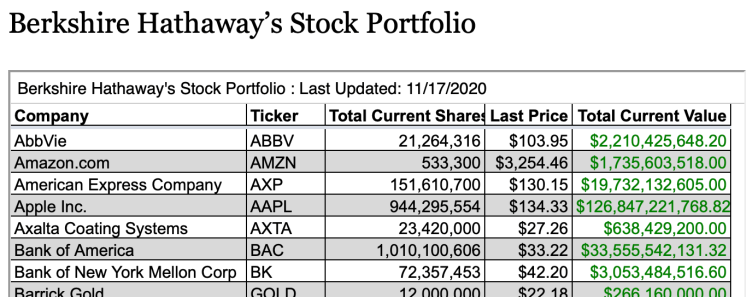
This article will help you figure out how to dollar-cost-average your investments. This article will show you how to create a DCA Plan, its advantages and disadvantages, and how to implement it. Continue reading to find out more. This article was originally published on eHow.com. It was republished with permission by the author. While this article will concentrate on DCA for plans 401k, it can also be used to apply to other retirement accounts.
Set up a 401k plan
When you set up your 401(k) plan to dollar-cost average, you are contributing a consistent percentage of your income to your retirement account on a regular basis. This money is automatically taken out of your paycheck each pay period. It's invested in stocks or bonds and ETFs. This strategy is effective for some investors, but more experienced investors prefer diversifying their portfolios.

A 401k plan can help set up a plan with dollar-cost average. This type of investing allows investors make regular, small investments to reduce psychological stress and maximize upside potential. This approach is great for long-term investments, but it can increase the risk associated with investing in stocks. This is an excellent way to invest in the long-term, and it can produce great returns.
Dollar-cost averaging has its disadvantages
Dollar-cost averaging is a great way to reduce the emotional component of investment decisions. This allows you to save money on a weekly and establish a pattern of investing. It also encourages your liquid net worth to grow. Dollar-cost averaging has its downsides. Before you implement this strategy, here are some things to consider.
The downside to dollar cost averaging is its inability to account for transaction costs and commissions. Because it involves buying and selling securities on a regular basis, investors are forced to pay broker commissions. Broker commissions can severely reduce your profits and make dollar-cost analysis unprofitable. Before you start investing in stocks with dollar-cost averaging, you should be aware of its advantages and disadvantages.
Steps to implementing a DCA plan
By making regular purchases over a longer period of time, a dollar-cost average plan can help you avoid investing at the wrong time. It is less risky to invest a large sum of money at once with dollar-cost average. It can yield higher long-term returns. The timeframe of the plan is also important because brokerage fees are typically tied to every single investment. Furthermore, investing in the markets during volatile times can lead to higher costs and lower returns.

Dollar-cost average is used to manage investments in a company's 401k plan. This involves selecting a set percentage and an amount for investing. The mutual funds are pre-selected investments. Some investors don't use an automated program, but double-down if a particular investment drops in value. This lowers the average cost. Steps for implementing a dollar average plan
FAQ
How are Share Prices Set?
Investors are seeking a return of their investment and set the share prices. They want to earn money for the company. So they buy shares at a certain price. Investors will earn more if the share prices rise. The investor loses money if the share prices fall.
An investor's primary goal is to make money. This is why they invest into companies. They can make lots of money.
What is the role and function of the Securities and Exchange Commission
SEC regulates the securities exchanges and broker-dealers as well as investment companies involved in the distribution securities. It also enforces federal securities law.
Who can trade on the stock market?
Everyone. All people are not equal in this universe. Some people have more knowledge and skills than others. They should be rewarded.
There are many factors that determine whether someone succeeds, or fails, in trading stocks. If you don’t know the basics of financial reporting, you will not be able to make decisions based on them.
You need to know how to read these reports. It is important to understand the meaning of each number. You must also be able to correctly interpret the numbers.
You'll see patterns and trends in your data if you do this. This will enable you to make informed decisions about when to purchase and sell shares.
If you're lucky enough you might be able make a living doing this.
How does the stock markets work?
Shares of stock are a way to acquire ownership rights. Shareholders have certain rights in the company. A shareholder can vote on major decisions and policies. He/she can seek compensation for the damages caused by company. He/she also has the right to sue the company for breaching a contract.
A company cannot issue shares that are greater than its total assets minus its liabilities. This is called capital sufficiency.
Companies with high capital adequacy rates are considered safe. Low ratios make it risky to invest in.
How do people lose money on the stock market?
Stock market is not a place to make money buying high and selling low. It's a place you lose money by buying and selling high.
The stock market is for those who are willing to take chances. They want to buy stocks at prices they think are too low and sell them when they think they are too high.
They expect to make money from the market's fluctuations. They might lose everything if they don’t pay attention.
What is the difference in marketable and non-marketable securities
Non-marketable securities are less liquid, have lower trading volumes and incur higher transaction costs. Marketable securities on the other side are traded on exchanges so they have greater liquidity as well as trading volume. Marketable securities also have better price discovery because they can trade at any time. However, there are many exceptions to this rule. There are exceptions to this rule, such as mutual funds that are only available for institutional investors and do not trade on public exchanges.
Non-marketable securities can be more risky that marketable securities. They are generally lower yielding and require higher initial capital deposits. Marketable securities can be more secure and simpler to deal with than those that are not marketable.
A large corporation may have a better chance of repaying a bond than one issued to a small company. The reason for this is that the former might have a strong balance, while those issued by smaller businesses may not.
Because they can make higher portfolio returns, investment companies prefer to hold marketable securities.
Statistics
- The S&P 500 has grown about 10.5% per year since its establishment in the 1920s. (investopedia.com)
- Ratchet down that 10% if you don't yet have a healthy emergency fund and 10% to 15% of your income funneled into a retirement savings account. (nerdwallet.com)
- "If all of your money's in one stock, you could potentially lose 50% of it overnight," Moore says. (nerdwallet.com)
- Our focus on Main Street investors reflects the fact that American households own $38 trillion worth of equities, more than 59 percent of the U.S. equity market either directly or indirectly through mutual funds, retirement accounts, and other investments. (sec.gov)
External Links
How To
How to Invest in Stock Market Online
You can make money by investing in stocks. There are many options for investing in stocks, such as mutual funds, exchange traded funds (ETFs), and hedge funds. The best investment strategy depends on your risk tolerance, financial goals, personal investment style, and overall knowledge of the markets.
Understanding the market is key to success in the stock market. This includes understanding the different investment options, their risks and the potential benefits. Once you have a clear understanding of what you want from your investment portfolio you can begin to look at the best type of investment for you.
There are three main categories of investments: equity, fixed income, and alternatives. Equity refers to ownership shares of companies. Fixed income refers debt instruments like bonds, treasury bill and other securities. Alternatives include things like commodities, currencies, real estate, private equity, and venture capital. Each category has its own pros and cons, so it's up to you to decide which one is right for you.
Two broad strategies are available once you've decided on the type of investment that you want. The first strategy is "buy and hold," where you purchase some security but you don't have to sell it until you are either retired or dead. The second strategy is "diversification". Diversification means buying securities from different classes. By buying 10% of Apple, Microsoft, or General Motors you could diversify into different industries. Buying several different kinds of investments gives you greater exposure to multiple sectors of the economy. This helps you to avoid losses in one industry because you still have something in another.
Risk management is another important factor in choosing an investment. Risk management will allow you to manage volatility in the portfolio. If you were only willing to take on a 1% risk, you could choose a low-risk fund. However, if a 5% risk is acceptable, you might choose a higher-risk option.
Learning how to manage your money is the final step towards becoming a successful investor. Managing your money means having a plan for where you want to go financially in the future. You should have a plan that covers your long-term and short-term goals as well as your retirement planning. That plan must be followed! Keep your eyes on the big picture and don't let the market fluctuations keep you from sticking to it. Stay true to your plan, and your wealth will grow.